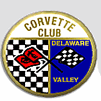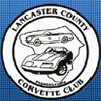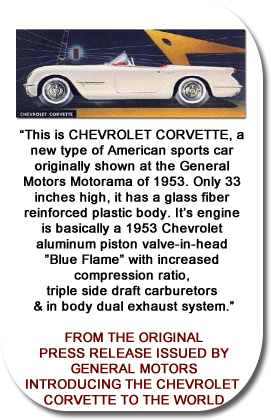C4 Fourth Generation
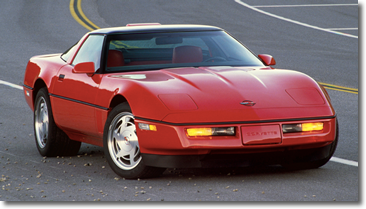
The fourth generation Corvette was the first complete redesign of the Corvette since 1963. Production was to begin for the 1983 model year but quality issues and part delays resulted in only 43 prototypes for the 1983 model year being produced that were never sold. All of the 1983 prototypes were destroyed or serialized to 1984 except one with a white exterior, medium blue interior, L83 350 ci, 205 bhp V8, and 4-speed automatic transmission. After extensive testing and modifications were completed, it was initially retired as a display sitting in an external wall over the Bowling Green Assembly Plant's employee entrance. Later this only surviving 1983 prototype was removed, restored and is now on public display at the National Corvette Museum in Bowling Green, Kentucky. It is still owned by GM. On February 12, 2014, it was nearly lost to a sinkhole which opened up under the museum. Eight Corvettes were lost.
Regular fourth generation production began on January 3, 1983; the 1984 model year and delivery to customers began in March 1983. The 1984 model carried over the 350 cu in (5.7 L) L83 slightly more powerful (5 bhp) "Crossfire" V8 engine from the final 1982 third generation model. New chassis features were aluminum brake calipers and an all-aluminum suspension for weight savings and rigidity. The new one piece targa top had no center reinforcement. A new electronic dashboard with digital liquid crystal displays for the speedometer and tachometer was standard. Beginning in 1985, the 230 bhp (170 kW) L98 engine with tuned port fuel injection became the standard engine.
1986 Corvette Convertible Indy 500 Pace Car Edition
September 1984 through 1988 Corvettes offered a Doug Nash designed "4+3" transmission – a 4-speed manual coupled to an automatic overdrive on the top three gears. It was designed to help the Corvette meet U.S. fuel economy standards.[46] Since 1981 (when it was last offered), a manual transmission returned to the Corvette starting with production in late-1984. The transmission proved to be problematic and was replaced by a modern ZF 6-speed manual transmission in 1989.
In 1986, the second Corvette Indy Pace Car was released. It was the first convertible Corvette since 1975. A Center High Mounted Signal Light (CHMSL) – a third center brake light – was added in 1986 to comply with safety regulations. While the color of the pace car used in the race was yellow, all 1986 convertibles also had an Indy 500 emblem mounted on the console, making any color a "pace car edition". In 1987, the B2K twin-turbo option became available from the factory. The Callaway Corvette was a Regular Production Option (RPO B2K). The B2K option coexisted from 1990 to 1991 with the ZR-1 option, which then replaced it. Early B2Ks produced 345 bhp (257 kW) and 450 lb•ft (610 N•m); later versions boasted 450 bhp (336 kW) and 613 lb•ft (831 N•m).
1988 saw the 35th Anniversary Edition of the Corvette. Each of these featured a special badge with an identification number mounted next to the gear selector, and were finished with a white exterior, wheels, and interior. In 1991, all Corvettes received updates to the body, interior, and wheels. The convex rear fascia that set the 1990 ZR-1 apart from the base model was now included on L98 Corvettes, making the styling of the expensive ZR-1 even closer to that of the base cars. The most obvious difference remaining between the base and ZR-1 models besides the wider rear wheels was the location of the CHMSL, which was integrated into the new rear fascia used on the base model, but remained at the top of the rear-hatch on the ZR-1's. 1992 Corvette ZR-1
For the 1992 model year, the 300 bhp (220 kW) LT1 engine was introduced, an increase of 50 bhp (37 kW) over 1991's L98 engine. This engine featured reverse-flow cooling (the heads were cooled before the block), which allowed for a higher compression ratio of 10.5:1. A new distributor was also debuted. Called "Optispark", the distributor was driven directly off the front of the camshaft and mounted in front of the timing cover, just above the crankshaft and harmonic balancer.[18] Also new for 1992 was Acceleration Slip Regulation (ASR), a form of traction control which utilized the Corvette's brakes, spark retard, and throttle close-down to prevent excessive rear wheel spin and possible loss of control. The traction control device could be switched off if desired.
A special 40th Anniversary Edition was released in 1993, which featured a commemorative Ruby Red color, 40th anniversary badges, and embroidered seat backs. The 1993 Corvette also marked the introduction of the Passive Keyless Entry System, making it the first GM car to feature it. Production of the ZR-1 ended in 1995, after 6,939 cars had been built.[46] 1996 was the final year of C4 production, and featured special models and options, including the Grand Sport and Collector Edition, OBD II (On-Board Diagnostics), run flat tires, and the LT4 engine. The 330 bhp (246 kW) LT4 V8 was available only with a manual transmission, while all 300 bhp (224 kW) LT1 Corvettes used automatic transmissions.
Chevrolet released the Grand Sport (GS) version in 1996 to mark the end of production of the C4 Corvette. The Grand Sport moniker was a nod to the original Grand Sport model produced in 1963. A total of 1,000 GS Corvettes were produced, 810 as coupes and 190 as convertibles. The 1996 GS came with the high-performance LT4 V8 engine, producing 330 bhp (246 kW) and 340 lb•ft (460 N•m). The Grand Sport came only in Admiral Blue with a white stripe down the middle, and black wheels and two red stripes on the front left wheel arch.
Our Affiliates
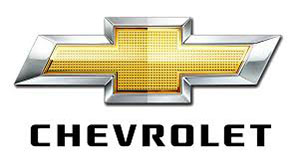 |
||||||
 |
||||||
 |
||||||
 |
||||||
 |
||||||
|
||||||




